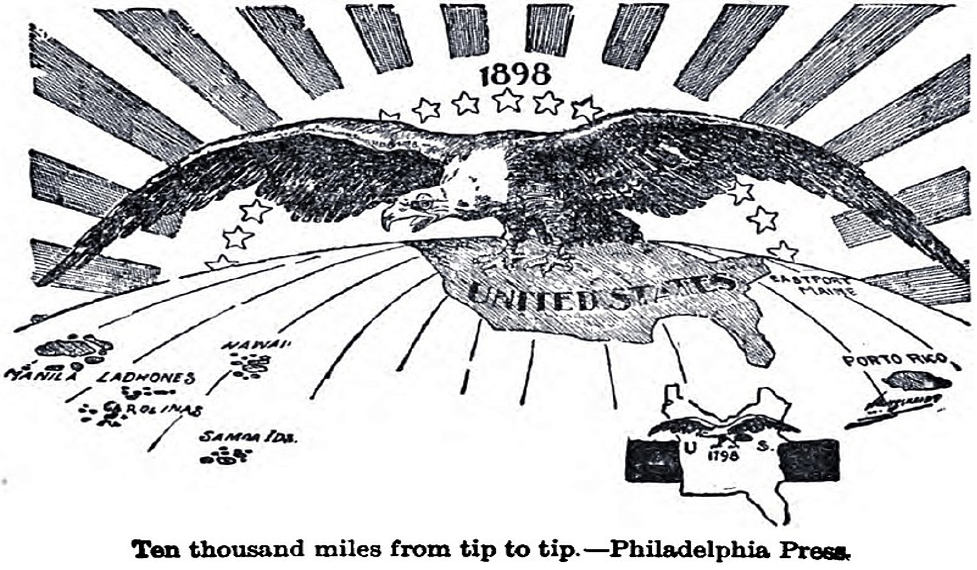America, the land of the free. A nation who started as colonies that rebelled due to foreign military on our soil, taxation without representation, and economic discrimination. This is common knowledge, but after this we became the devil we despised. America first colonized within our current borders to create the 50 states, then expanded outward into Latin America and the Pacific, treating others in the same manner that was so unbearable for us.
For this article, two definitions must be established, the definitions of a colony and of imperialism.
Per Merriam-Webster, a colony is simply “an area over which a foreign nation or state extends or maintains control,” and imperialism is “the policy, practice, or advocacy of extending the power and dominion of a nation especially by direct territorial acquisitions or by gaining indirect control over the political or economic life of other areas,”
A colony, or colonization, is one of the most direct manifestations of imperialism,which is the driving force for colonization. Any imperialist nation, from the British to the French and Portuguese, manifested their imperialist ideologies through colonization across the globe.
America was busy fighting against the British from the late 18th century until the early 19th century. As our sovereignty was cemented and growth became the goal, we quickly turned our eyes westward, fostering our own imperialist dreams. America missed out on the Era of Imperialism, first by being a victim of it, second by having to shake imperialism’s shackles and establish a new nation. America wanted to follow in the footsteps of the European powers, who had grown rich and powerful from imperialist colonization.
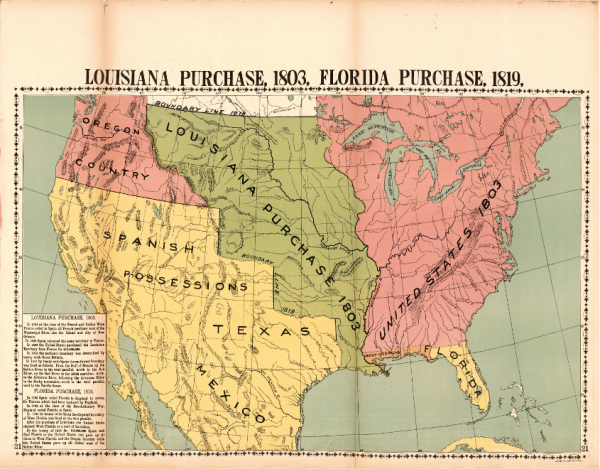
In 1803, the government facilitated the Louisiana Purchase from France, claiming ownership over land that was already inhabited by thousands of Native Americans representing dozens of tribes.
As America forged its own identity, the Louisiana Purchase would be the building blocks of American imperialism. We bought imperialist rights meaning that France would just become uninvolved in the affairs of the area.
The real owners, the Native Americans, would have to be dealt with on a tribe-by-tribe basis. The initial plan was for all Natives east of the Mississippi River to be moved west of, into the land acquired.
The founding fathers envisioned this confrontation would arise, “The Government of the United States are determined that their administration of Indian affairs shall be directed entirely by the great principles of Justice and humanity.” George Washington himself stated.
Instead of invasion and using force, America would instead broker deals and offer treaties. Initially, dealings with Native Americans were more often than not peaceful, with services like blacksmiths, new technology or cash payments being offered to Natives who would relocate from their ancestral lands.
“So (Thomas) Jefferson’s vision, and this is what he wants to do with the Louisiana Purchase, is to use all that land claimed…for Native Americans,” Northwestern Professor and author of “How to Hide an Empire” Daniel Immerwahr said in an interview with Empire Files. “This was land that was supposed to be lived in only by Native Americans, white people without passes weren’t even allowed to go there… very arguably, that’s the first colony the United States ever had… however it didn’t last very long… it was quickly whittled down.”
As America’s population grew and the need for land became more urgent, peaceful and fair dealings would go out the window regarding tribes who refused these deals to move.
The Peoria War, fought in 1813, came as tensions between settlers and Natives were still high from the War of 1812, and resulted in 5 million acres of land that was already inhabited by Natives being set aside for soldiers to occupy, a reward for their service.
The Seminole Wars came about as they refused to relocate. American soldiers invaded in 1817, led by Andrew Jackson, as he destroyed villages and even occupied Pensacola. The Seminoles were forced into the Treaty of Moultrie Creek. This treaty removed them from fertile lands they had always inhabited, to the swamps of Central Florida.
The Muscogee, of current day Alabama, signed a treaty to keep their land in order to prevent conflict. Just four years after the treaty, settlers began occupying land that was ancestrally, and legally, theirs. This resulted in the U.S. military being called in to force the Muscogee off their land.
As these, and similar conflicts happened, a new variable was introduced to the equation: cotton. The South was becoming rich at the time through cash crops, and cotton was king. A strip of land that farmers found desirable, the Black Belt Prairie, was already held and enforced through treaties with the government, by the Chickasaw, Choctaw, Cherokee and Muscogee.
Georgia passed a law attempting to abolish the Cherokee government, and the Cherokee took Georgia to the supreme court, winning. The court ruled that states could not impose on tribal sovereignty, they were their own nations.Andrew Jackson was president at the time, a man who bragged to his wife about killing 170 Native Americans in the War of 1812. The Supreme Court ruling would prompt his response, the Indian Removal Act of 1830.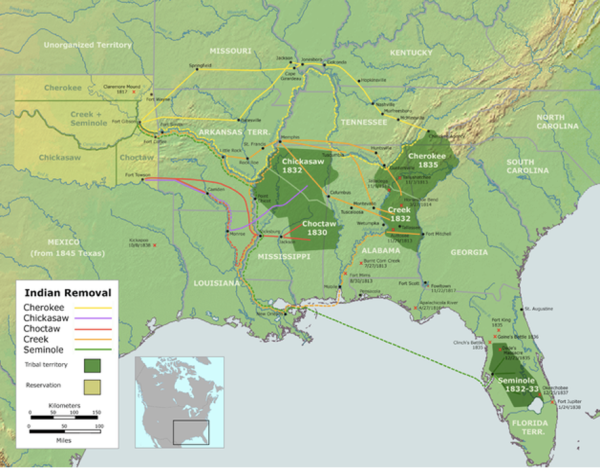
The act promised land West of the Mississippi River in exchange for giving their ancestral land to America. The act would later be used to remove the five “civilized” tribes of the South to the Oklahoma territory in 1831, The Trail of Tears. These tribes were the Seminole, Creek, Chickasaw, Choctaw and Cherokee. These five were viewed as civilized because they either had economic ties to whites or were assimilating into American culture.
On The Trail of Tears, 3,500 Creek would pass, along with 6,000 Cherokee, which is nearly 10,000 from just 2 of the 5 tribes involved. Cotton farmers won, moved in, and the economy of the South flourished, at the expense of slaves and natives. 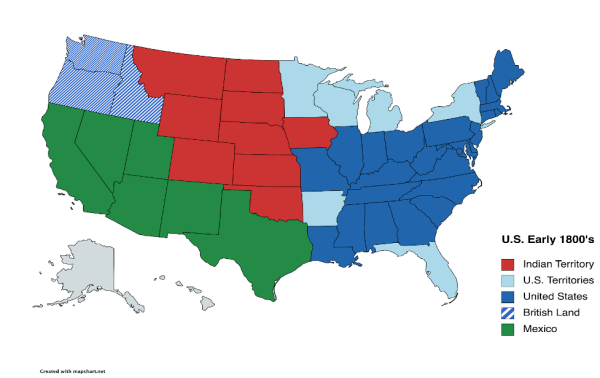
Following the Indian Removal Act, which determined the Mississippi River as the boundary, the territory given to Natives continued to be slowly taken from them. The map above shows the respective land held by each group in 1834.
In 1851, the Indian Appropriations Act established the reservation system to better control tribes, but even then some reservations were decreased in size as the land became desired. This was essentially the final step in the relocation process, as Oklahoma and the reservations contained nearly all Natives. 12 million Native Americans died from 1492-1900 in the area now considered the United States.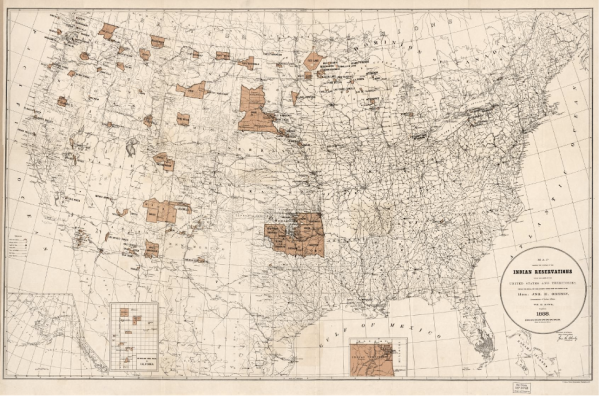
Imperialism was America’s desire to expand west for economic gain, power on the world stage and increased territory. This desire was expressed through colonization, through establishing certain regions as the only place for Natives to exist.
This land was not unexplored, or uncharted, it was inhabited and gained through conquest or political maneuvering. But, just because it wasn’t inhabited by white settlers it was viewed as exploration, it was America’s destiny to expand from the Atlantic to the Pacific Ocean, dictated by God himself.
Tribes were recognized as individual sovereign nations through their treaties and by the Supreme Court. These treaties would be voided on whims, whenever the need for expansion arose, or when the government viewed Native land as economically valuable, and wanted the value for themselves. This is noticeable in the Black Belt Prairie, or gold in California that catalyzed removal. The treaties were just a cover, a way to make it seem like peaceful relations were the goal.
This practice of making treaties then breaking them as it served government imperial interests through colonization continued until all the land in what we now know as the mainland of the United States was under one flag. Until dozens of tribes were corralled into Oklahoma.
Oklahoma would be one of the last territories left, the 47th to join the Union through statehood.
After Native American removal ,the goal was forced assimilation. Native children, some pre-k aged, were stolen from their homes and taken to off reservation boarding schools. These schools were inspired by the 1879 Carlisle Indian Industrial School.
Ran by Richard Pratt, the school operated with the view that they needed to “kill the Indian in him and save the man.” Pratt believed that Native Americans would not succeed until their culture, beliefs and way of life no longer existed.
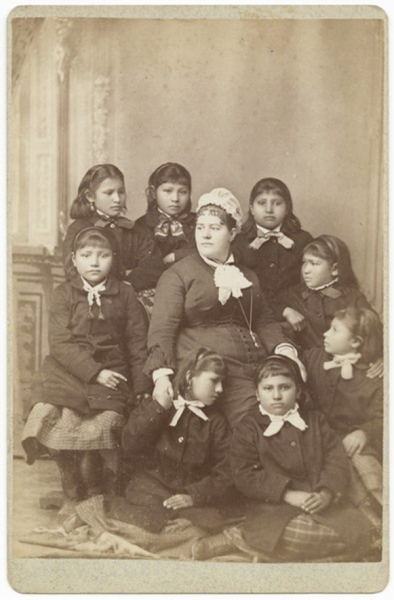
100,000 children were forced into these schools, forbidden to speak their language, made to renounce their beliefs, and even leased out to white families as indentured servants. Most of these reeducation facilities were operated by religious organizations. A 1928 investigation by the Interior Department reported overcrowded dorms, insufficient food and insufficient medical care. In a decade most of these schools had been closed.
As the frontier closed and America had no more land domestically to colonize, imperialist dreams had to become reality elsewhere, setting the stage for the American Empire’s expansion abroad.
In 1856 the Guano Islands Act allowed Americans to colonize unclaimed islands with guano deposits, seabird droppings, in the name of the United States. Guano was demanded by farmers in the mid 19th century as it was an effective fertilizer, it was also used in gunpowder.
This would be America’s first significant overseas expansion; ten of these islands are still under U.S. control today, but over 100 islands were claimed. The ten still under American control include Midway Atoll, Johnston Atoll, Jarvis Island, Howland Island, Kingman Reef and Baker Island. Guano imports peaked at over 175,000 tons.
The Civil War and Reconstruction from its effects dominated American politics and thought for the next couple decades. But as the 20th century approached, imperialist expansion arose once more.
White missionaries from New England first arrived in the Kingdom of Hawaii in 1820 and were accepted by Hawaiian leaders. The American missionaries eventually had children in Hawaii, but as time passed their children, and their grandchildren, moved their focus from evangelism to the lucrative sugar cane. The first sugar cane plantation on Hawaii arose in 1835.
In 1887, Hawaii’s leader, David Kalakaua, was forced under threat of assassination into signing a “Bayonet Constitution.” This new constitution gave the leaders of Hawaii less power, while giving America and American citizens on Hawaii more power. 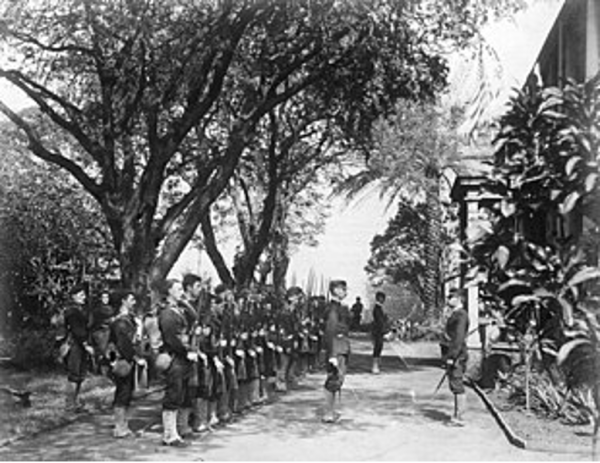
As the 1890’s approached, their grandchildren had formed their own militia on the island, and were looking to overthrow Hawaii’s government so they could further advance their sugar production. The missionaries’ descendants were still a minority, so an overthrow would’ve been difficult. This all changed when the USS Boston arrived off the coast of Oahu in 1893, with a detachment of U.S. Marines.
The United States overthrew Hawaii’s government and installed Sanford Dole as Hawaii’s new executive. The Dole family was a huge player in the sugar cane industry, and benefited greatly from their new possession; they’re still massive players in the produce industry today.
In 1898 Hawaii would be fully annexed, becoming America’s newest territory. After the annexation, the Hawaiian language was banned, and business had to be conducted in English only.
1898 also saw the USS Maine explode off the coast of Cuba. Americans believed a Spanish explosive weapon was the cause, while the Spanish claimed it was an internal explosion. The Spanish-American War followed. The situation was antagonized by yellow journalism in major newspapers and the desires of imperialists, like Teddy Roosevelt.
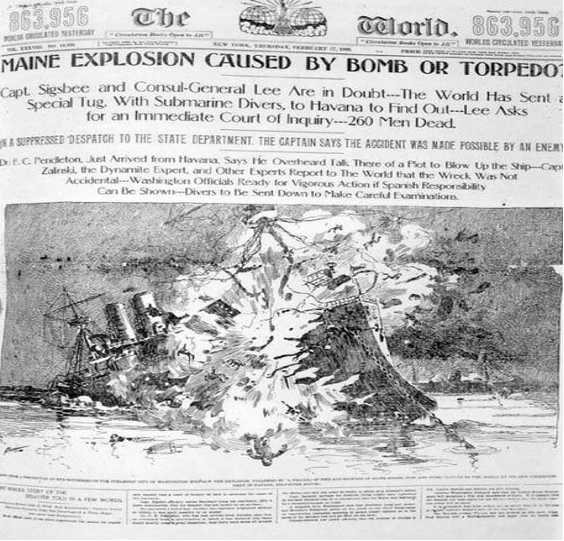
The Spanish Empire was in decline, fighting against independence movements in Cuba and the Philippines. The first battle between America and Spain occurred in the Philippines, where Spain was already losing control of their colony.
By the end of the conflict, Spain gave the United States control of their last colonial holdings, which included the Philippines, as well as Puerto Rico and Guam, giving America a further three colonies. Spain preferred to lose to America, a global power, rather than the Philippines, who they viewed as inferior culturally and technologically. American involvement to “liberate” the Spanish colonies just meant America would be the new colonizer.
The continued colonization of the Philippines by the U.S. led to the bloody Philippine-American War. At least 200,000 Philippine civilians were killed. American strategies included burning villages, building concentration camps, executing civilians and torturing suspected guerilla fighters. This conflict was essentially the 19 century version of the Vietnam War.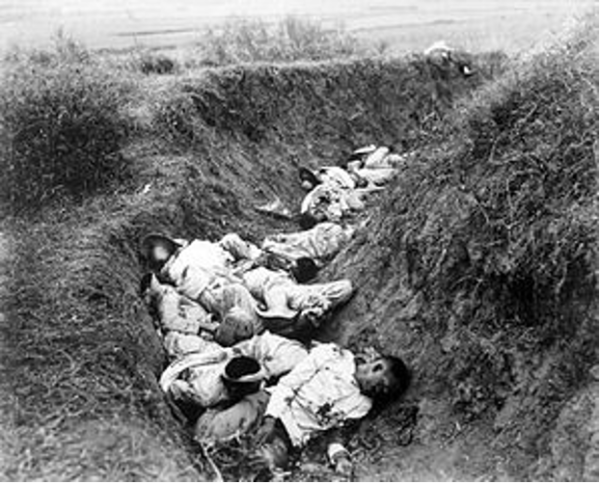
In 1899 the Tripartite Convention between America, the U.K. and Germany divided the Samoan Islands into spheres of influence, with Germany laying claim to the western islands, and the U.S. gaining the eastern islands. The country would not elect their own leader until the mid 20th century, and to this day their chief export is tuna, which is profited on by the Starkist company.
1899 was also the year Wake island was annexed under President William Mckinley to serve as a defensive outpost. The Mariana Islands came under U.S. control in 1947 as part of the treaty with Japan that ended WWII.
These overseas territories are under the control of America, they fly the stars and stripes, yet are denied representation in the U.S. government. Residents of these lands contribute financially, yet are not allowed Senators or Congressmen, taxation without representation.
The common narrative is that America started off as 13 colonies, who became states, and these states wanted to create more states so they gradually expanded westward. The truth is not quite so simple or charitable to the United States.
The truth is that initially the states were desiring to expand just as much as they were desired to relocate Natives, and did so by giving them land protected by treaties. But these treaties were ignored for the tribes that accepted them, while the tribes who didn’t accept treaties would be killed or forced to move.
A racial cleansing was required for America to become the 48 states of the mainland. This cleansing was caused by imperialist attitudes, and was expressed in colonization.
As the mainland was fully claimed, there was nowhere to go but overseas, which led to the colonization of islands for bird poop, annexing Hawaii for sugar cane and corporate interests, starting a war with Spain to gain more territory..
Ignoring the history of the hidden American Empire does a disservice to those who are and were colonized, murdered and forced to assimilate. It is also opposite to everything that America claims to be, who is America to force on others the same conditions that caused a revolution at home.
The American Empire is not something that is easily noticeable, it is a blemish on the history of the United States. Though it is rarely talked about, it is important to remember America’s own imperialist ambitions when discussing other contemporary empires, the power gained through imperialism made possible America’s hegemonic position today.

